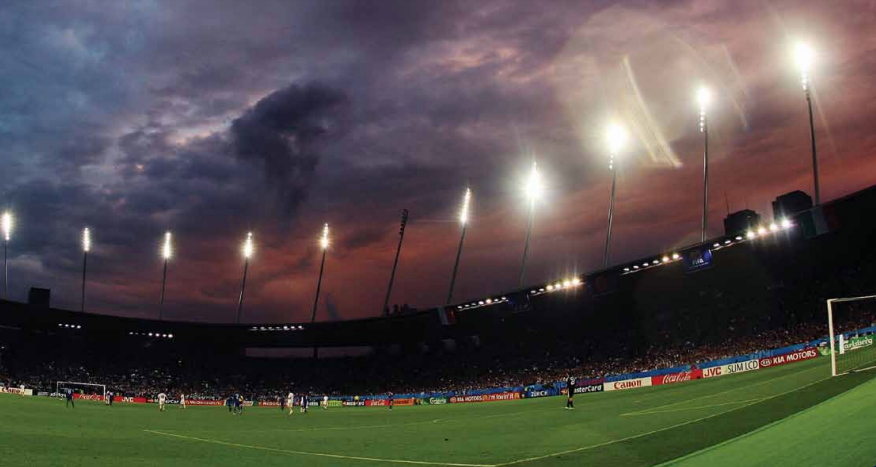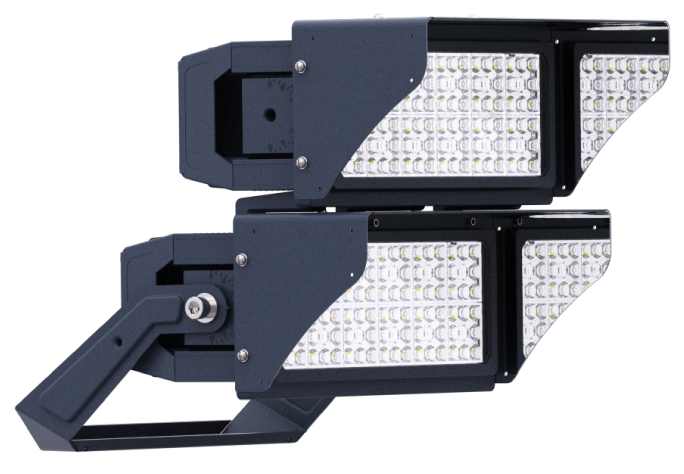Optimizing Football Field Lighting for Safety and Spectator Experience at Night
Optimizing Football Field Lighting for Safety and Spectator Experience at Night

Directory:
1. Introduction
2. Lighting Distribution and Its Impact on Visual Experience
3. Strategies for Optimizing Stadium Lighting
Effective lighting design in football field plays a crucial role in ensuring nighttime athletic performance, safety, and spectator engagement. Optimal lighting distribution must address both functional requirements for players and visual comfort for audiences. Common challenges, such as uneven illumination, inadequate glare management, and subpar color rendering, often compromise safety and viewing quality. This study investigates how advanced lighting strategies enhance nighttime sports safety and spectator experience, offering actionable insights for designing efficient and adaptive football field lighting systems.
1. Introduction
Lighting in football field transcends basic visibility—it directly impacts competitive fairness, athlete safety, and spectator satisfaction. Scientific lighting design must harmonize technical precision with human visual perception. Research indicates that uniform brightness and seamless light transitions are critical for tracking fast-moving objects, such as a football, while uneven illumination can create blind spots, delaying athletes’ reactions and increasing injury risks. For spectators, lighting must ensure clarity across the entire field, enabling detailed observation of dynamic plays. This dual focus underscores the interdisciplinary nature of stadium lighting, merging engineering, sports science, and visual ergonomics.
2. Lighting Distribution and Its Impact on Visual Experience
2.1 Uniformity for Enhanced Visual Tracking
Uniform lighting minimizes abrupt brightness variations, allowing spectators to seamlessly follow fast-paced gameplay. Smooth luminance gradients reduce eye strain and improve focus, whereas inconsistent lighting forces frequent visual adjustments, leading to fatigue and diminished engagement. Studies suggest that uniform illumination can boost tracking accuracy by up to 30% compared to unevenly lit environments.
2.2 Role of Color Temperature and Rendering
Color Temperature: A range of 4000–6000 K is ideal, mimicking natural daylight. Lower temperatures (<3000 K) produce yellowish tones that obscure details, while higher temperatures (>7000 K) create harsh, bluish light, exacerbating visual discomfort.
Color Rendering Index (CRI): A CRI ≥85 ensures accurate color reproduction, vital for distinguishing team jerseys, the ball, and field markings. Poor CRI distorts colors in dynamic scenes, reducing realism and viewer immersion.
3. Strategies for Optimizing Stadium Lighting
3.1 Key Technical Parameters
Lighting design must adhere to international standards, balancing illuminance, uniformity, and glare control:
Horizontal Illuminance: 750–1200 lux (professional matches), 500–750 lux (amateur games).
Vertical Illuminance: ≥750 lux in critical zones (e.g., goal areas) to enhance depth perception.
Uniformity Ratios: Minimum-to-maximum uniformity (U₁) ≥0.5; minimum-to-average (U₂) ≥0.7.
Glare Rating (GR): ≤40 for broadcast-quality events to minimize visual interference.
These parameters ensure sufficient brightness, eliminate blind spots, and maintain visual continuity.
3.2 Adaptive Lighting Solutions
Professional Matches: Deploy high-power LED arrays (8–12 units per corner) with symmetrical layouts. Central zones require 1000–1200 lux, supplemented by adaptive dimming to reduce energy consumption.
Training Facilities: Prioritize energy efficiency with 200–500 lux horizontal illuminance and simplified uniformity (U₁≥0.4). Motion-activated controls further optimize operational costs.
Advanced lighting design significantly enhances nighttime football safety by improving athletes’ spatial awareness and reducing glare-induced errors. For spectators, uniform illumination and high CRI deliver immersive, fatigue-free viewing experiences. Emerging technologies, such as real-time adaptive systems and energy-efficient LEDs, promise smarter, sustainable solutions for future stadiums, aligning performance with environmental goals.
4. Related Product

5. FAQ
Q: Why is proper lighting important for night football games?
A: Good lighting ensures player safety, allows accurate gameplay, provides clear visibility for spectators, and meets broadcast requirements for televised matches.
Q: How can we reduce glare from football lights?
A: Use shielded LED fixtures, proper mounting angles (30° tilt), and maintain GR (Glare Rating) below 40 for professional matches.
Q: What color temperature works best?
A: 4000K-6000K (cool white) provides optimal visibility and reduces eye strain, similar to natural daylight.
Q: How many light poles are needed for a standard football field?
A: Typically 4-8 poles (50-80 ft tall) with 8-16 LED fixtures per pole, depending on field size and lighting class.
Q: How long do football field lights last?
A: Quality LED systems last 50,000-100,000 hours.
Q: How much does it cost to light a football field?
A: Lighting a football field typically costs 50,000–50,000–200,000 for LED system installation and 10–10–50 per night in energy usage, depending on field size, lighting class, and local electricity rates.
Q: Where should football field lights be positioned?
A: Mounted high (50-80ft) at field corners/sides to minimize shadows and provide even coverage across the entire playing surface.
